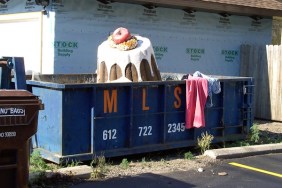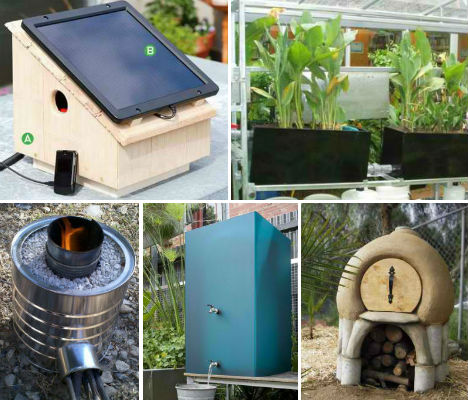
Whether you’re building a cabin in the woods that’s disconnected from any power or water sources, or just want to reduce your utility bills, going partially or totally off grid can be done on the cheap with a little creative thinking. There are many small ways to reduce your electricity and water consumption and even do without a septic or sewer system. These DIY off grid home projects include mini wind turbines, solar cookers, water filtration, greywater systems and low-tech refrigeration.
Mini Wind Turbine Setup
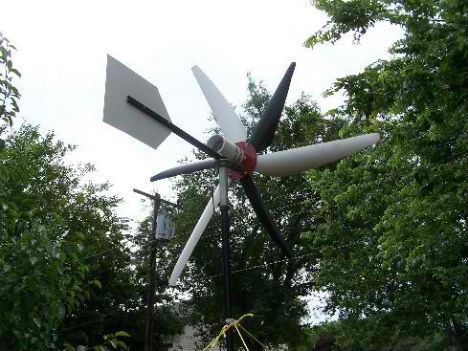
(image via: thekevdog)
Think a wind turbine is out of reach? If it seems like too big of a project or you just want to supplement solar or grid power with wind when possible, consider building your own mini wind turbine. Blogger Kevin Harris provides a step-by-step tutorial on how to build a mini wind turbine capable of generating 50-250 watts with just $150 in materials.
Outdoor Wood-Fired & Solar Ovens
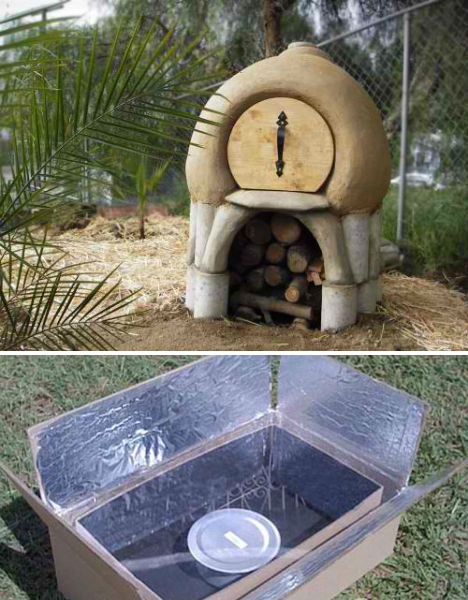
(images via: i love cob, ecofriend)
In the summertime, it’s too hot to cook inside, anyway. Avoid adding extra heat to your house by cooking outdoors. Grills are great, but wood-fired ovens and solar cookers will allow you to bake bread, cookies and lots more. Cob ovens are made of mud and straw, and get hot enough to churn out delicious wood-fired pizzas in less than three minutes; instructions for building them can be found all over the internet and on YouTube. Solar cookers can be built with little more than a cardboard box and some aluminum foil or a windshield sun reflector, and require no more than the sun to cook your food.
Rocket Stoves
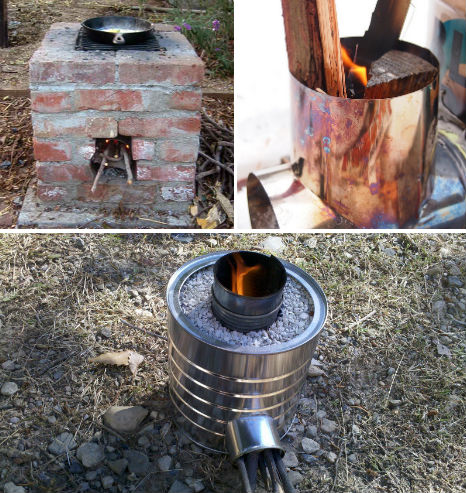
(images vía: yuichiro hag, rootsimple, the DIY world)
Rocket stoves are another great option for outdoor cooking. They’re really cheap and easy to build, and all they require to produce lots of heat is small branches. The DIY world has a tutorial for building a small portable rocket stove out of cans, and Root Simple offers instructions for a more permanent backyard stove made of bricks.
Collecting Rainwater
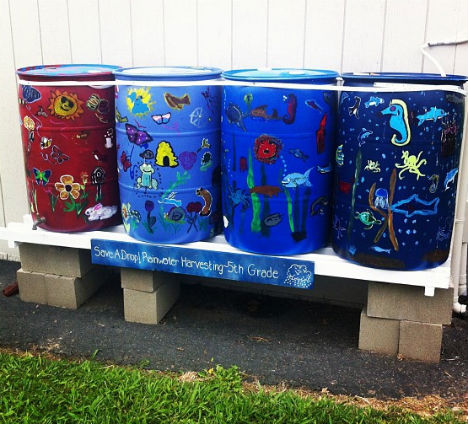
(image via: darinmclure, museum victoria)
Collecting rainwater for irrigation use in the garden can save a lot of water, and if you live in an area with moderate to high rainfall, you could even rely exclusively on rainwater for all of your water needs. Your collection system might range from roof gutters and a single rain barrel to a larger-capacity stacked system or even an extra-large tank, which can be above-ground or buried. When collecting rainwater, the single biggest factor determining how much you can collect (aside from average rainfall) is the size of your roof. Learn more about your options at Raincentre US.
Simple Greywater Treatment
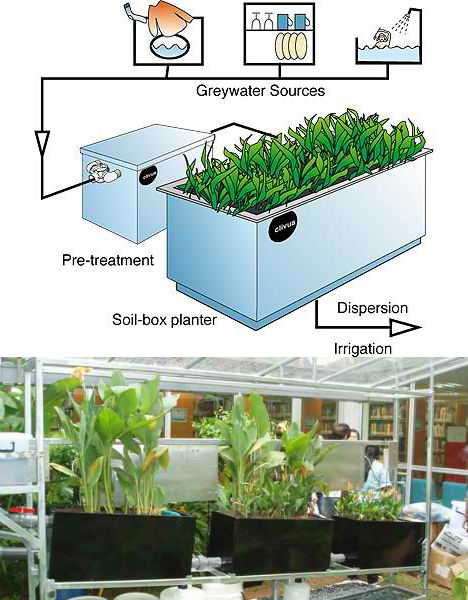
(images via: greywater.com, waterqualityinsingapore)
Want to skip the sewer or septic system? You can recycle the ‘greywater’ from your home, which is waste water from the sinks, showers, tubs and washing machines. A backyard greywater system typically involves routing this waste water, which may contain traces of dirt, food, grease, hair and household cleaning products, out to the yard to irrigate non-food-producing plants. Gravity-based systems that don’t rely on pumps or filters last the longest and are the easiest to maintain. If you produce more wastewater than you need for irrigation, you can create ‘constructed wetlands’, which filter and absorb the water naturally. If you don’t produce much wastewater at all, you can even set up a system of planters that will filter the water, as pictured above. Learn more about all of your options, and what not to do, at OasisDesign.net and GreywaterAction.org.
The Art of Composting Toilets
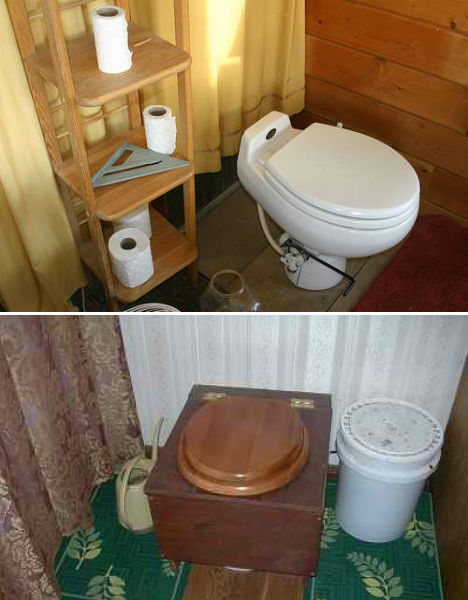
(images via: mother earth news, compost junkie)
Every day, we’re collectively flushing billions of gallons of perfectly drinkable water down the toilet, while clean water grows ever more scarce and millions of people in developing nations die without it. When properly maintained, composting toilets turn human waste into harmless soil, and they’re easier to take care of than you might imagine. You can buy a commercial composting toilet, or make a really simple one yourself out of little more than a bucket, a toilet seat and some carbon-rich composting materials like sawdust, cedar chips or shredded oak leaves. They’re emptied regularly into a specially-prepared outdoor compost bin that’s kept separate from the compost you use for vegetable and herb gardens. Get more info at Mother Earth News and the Humanure Handbook.
Solar-Powered Appliances & Gadgets
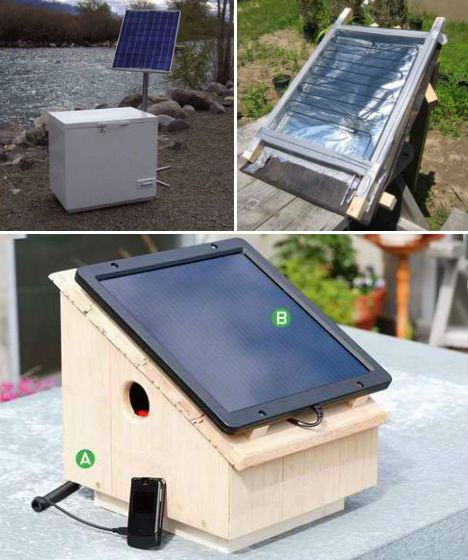
(images via: sunshine works, ecoble, popsci)
There are so many small opportunities to disconnect from the grid, and while some of them involve somewhat pricey, high-tech solar gadget chargers, others are decidedly simple. There are solar-powered versions of all sorts of electronic devices available, including laptop chargers, phone chargers, stereos and even refrigerators; you can also build your own DIY solar charger for about $150. Don’t forget hand-crank gadgets, too, which include coffee grinders, blenders, gadget chargers and more.
Manual Laundry Machine
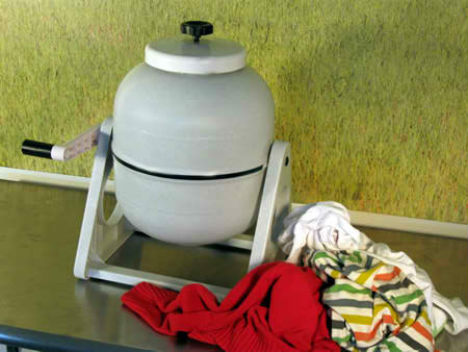
(image via: tiny house blog)
Laundry machines are some of the hardest electrical appliances to part with when you’re trying to go partially or completely off-grid. Most of us have an idea of manual clothes washing as being a rather arduous task, requiring a whole lot of elbow grease and time. But there are some simple manual washing machines that require no power at all. The Wonder Wash is a small drum with a hand-crank that can wash up to 5 pounds of clothing at a time and only takes about two to five minutes of ‘churning’ to get the laundry clean. It also requires less detergent and water than a standard washing machine or even doing hand-wash in a bucket. The Wonder Wash sells for about $50. Want to go even simpler? You can DIY your own off-grid laundry machine. Get the instructions at MAKE.
Once the clothes are clean, wring them out and hang them up to dry. You can get wringers to make the process easier, as well as a variety of clothesline solutions, at Lehmans.com.
Easy Root Cellars & Low-Tech Fridges
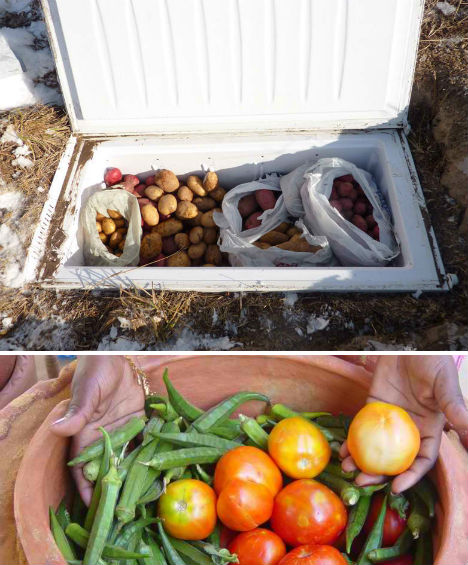
(images via: inhabitat, practical action)
Root cellars are an ancient method of preserving fruits and vegetables like apples, onions and potatoes throughout the year. The stable temperature of the earth below the frost line creates enough natural ‘refrigeration’ to keep these items fresh. While traditional root cellars were often walk-ins, most of us don’t need that much space for one household. You can create a root cellar using recycled and reclaimed materials. Bury a non-working chest freezer or even a trash can in the ground.
Want to go without a refrigerator altogether? There’s a cool low-tech way to keep items cool on the countertop. Pot-in-pot refrigerators, known as zeer pots, can keep veggies fresh for up to 20 days, even in hot climates. The contents are kept cool by a layer of damp sand between two terra-cotta pots; as the water in the sand evaporates, it helps cool the inner pot. Learn how to make your own zeer pot.
DIY Water Filters and Solar Stills
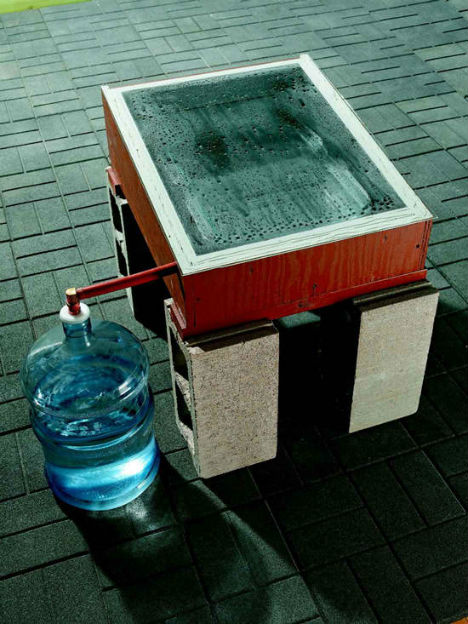
(image via: mother earth news)
Many off-gridders, especially those living in tiny houses, rely on Big Berkey water filters to make rainwater safe for drinking. Berkeys are tabletop water filters and storage tanks that come in various sizes, and are known for their reliability and durability. But you can make your own Berkey-style water purifier for much cheaper, using buckets or inexpensive plastic pitchers and a $50 Berkey filter insert. Solar stills are also a cool DIY option, purifying water by means of distillation.


